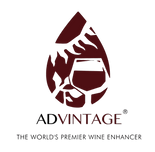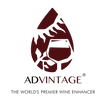Breaking Barriers: How a Winery Transformed Second Label Wine to Exceed First Label Quality

In the prestigious wine regions of Napa Valley or Bordeaux, France, the distinction between first label and second label wines has long been considered immutable. First labels command premium prices, often three to four times higher than their second label counterparts, based on the assumption that superior grapes, extended aging, and meticulous craftsmanship create an unbridgeable quality gap. But what if that gap could be closed—or even eliminated—through innovative wine enhancement technology?
A groundbreaking case study conducted using the wines produced by a renowned Napa winery has shattered traditional beliefs about wine quality and pricing structures. Using ADVINTAGE®, a revolutionary wine enhancer, researchers demonstrated that a second label Cabernet Sauvignon could not only match but actually exceed the quality of the winery's premium first label wine, while delivering significant cost advantages that could transform the economics of wine production.
The Napa Experiment: A Scientific Approach to Wine Enhancement

The experiment was designed with scientific rigor to eliminate bias and provide clear, measurable results. Four wines were selected for comparison, all from the same renowned Napa winery: an untreated second label wine, the same wine enhanced with ADVINTAGE®, a premium first label control, and a premium aged control. The evaluation focused on **15 specific aging wine attributes** that are universally recognized as indicators of wine quality and maturity. These attributes were carefully categorized into four distinct groups that encompass the complete sensory experience of premium aged wine.
Remarkable Results: 72% Aging Attributes Achievement

The results of the experiment were nothing short of revolutionary. The ADVINTAGE®-enhanced second label wine demonstrated a 45% improvement in overall quality compared to the untreated version, but more significantly, it achieved an impressive 72% of the aging attributes typically associated with premium aged wines. To put this in perspective, the enhanced second label wine didn't just improve—it developed characteristics that typically require years of careful cellaring and optimal storage conditions. The treated wine exhibited the complex depth, refined flavor integration, sophisticated mouthfeel and lengthy finish that wine enthusiasts associate with bottles costing three to four times more.
Perhaps most remarkably, the enhanced wine exceeded the quality of the winery's own first label wine from the same vintage. This means that a $19.99 second label wine, when treated with ADVINTAGE®, surpassed the sensory profile of a $69.99 first label wine, effectively delivering premium quality at a fraction of the cost.
The Science Behind the Success

ADVINTAGE® achieves these remarkable results through a sophisticated understanding of wine chemistry and sensory science. The enhancer works by introducing naturally fermented botanical extracts that mimic the complex processes that occur during traditional aging. During natural aging, wines develop tertiary compounds through slow oxidation, esterification, and other chemical reactions that can take years to complete. ADVINTAGE® accelerates and optimizes these processes, introducing the specific compounds that create the sensory characteristics associated with premium aged wines. Importantly, it doesn't mask or artificially flavor the wine. Instead, it works with the wine's existing components to unlock and enhance the potential that already exists, preserving the wine's authenticity while elevating its quality to premium levels. This is why ADVINTAGE® is 100% natural, gluten-free, non-GMO, and vegan—it's a safe and effective way to elevate your wine experience without any artificial additives.
The principles demonstrated in the Napa study have broader applications across all wine varieties. The ability to enhance aging characteristics could benefit producers of Pinot Noir, Chardonnay, and other varieties that traditionally require extended aging. **ADVINTAGE®** offers a range of products tailored for specific wine types. For red wines, try ADVINTAGE® Red. For whites, we recommend ADVINTAGE® White. And for lighter wines like Rosé, check out ADVINTAGE® Light.
Cost-Effectiveness Analysis: Transforming Wine Economics

The economic implications of these results are staggering. The experiment demonstrated a 71% cost improvement when comparing the enhanced second label wine to the first label alternative. With a cost difference of $50 between the enhanced second label ($19.99 plus enhancement cost) and the first label ($69.99), wineries could potentially offer premium-quality wine experiences while maintaining significantly higher profit margins. This also means you can enjoy a premium wine experience regularly without the premium price tag. For someone who wants to drink good wine a few times a week rather than just on special occasions, this approach makes perfect financial sense.
The enhanced 2019 second label wine showed aging effects comparable to the 2018 Cabernet Sauvignon, which achieved 83% aging attributes and retailed for $89.99. This comparison reveals that ADVINTAGE® can effectively compress the aging timeline, allowing wineries to deliver aged wine characteristics without the time, storage costs, and inventory risks associated with traditional cellaring.
Conclusion: A Paradigm Shift in Wine Quality and Value

The Napa winery case study demonstrates that ADVINTAGE® represents more than just a wine enhancement product—it's a technology that could fundamentally transform the wine industry. By enabling a $19.99 second label wine to exceed the quality of a $69.99 first label wine, the study proves that exceptional wine quality doesn't have to be limited by traditional constraints of time, cost, or classification. The 71% cost improvement and $50 price difference create compelling economic arguments for both producers and consumers.
Perhaps most importantly, this technology democratizes the premium wine experience, making exceptional quality accessible to a broader range of consumers while maintaining the artistry and authenticity that make wine special. With results this compelling, the question isn't whether this technology will transform the industry, but how quickly wineries will embrace the opportunity to redefine what's possible in wine quality and value. Ready to see the results for yourself? Explore the entire ADVINTAGE® collection and unlock your wine world today.
Frequently Asked Questions
Is ADVINTAGE® safe to use?
Yes. ADVINTAGE® is made from 100% natural, fermented botanical extracts that are gluten-free, non-GMO, and vegan. It's a safe and effective way to elevate your wine experience without any artificial additives.
How many uses can I get from one bottle?
A single 10ml bottle can enhance up to 12-15 bottles of wine, making it an incredibly cost-effective solution.
What kind of wines work best?
The most dramatic results are seen with younger, less expensive wines that have not yet had the time to fully develop.
Can I use it on older wines?
While designed for young wines, you can certainly experiment with older wines to see how it might further refine their flavor.
How long does the effect last?
The enhancements are permanent for the treated wine. Once the product is used, the wine will retain its improved characteristics.

